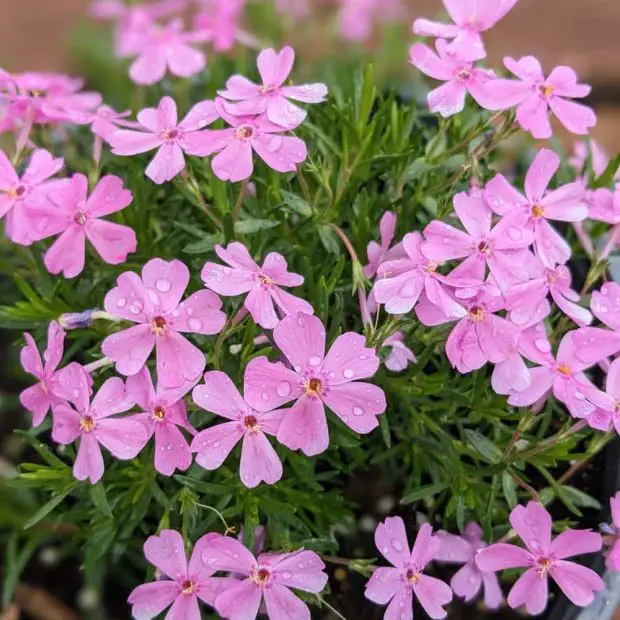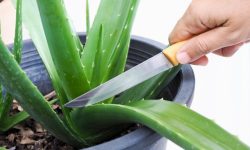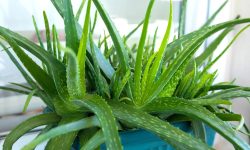Creeping phlox (Phlox subulata) is a beloved perennial ground cover that transforms ordinary landscapes into a living tapestry of vibrant colors. Renowned for its dense, mat-forming habit and cheerful flowers in pink, lavender, blue, white, and magenta, this spring-blooming plant is a favorite in cottage gardens, rockeries, slopes, and borders. But while its beauty is undeniable, one question consistently arises among gardeners: how long does creeping phlox bloom, and how can we extend that beautiful display?
Understanding the blooming behavior of creeping phlox not only helps you plan your garden aesthetics more effectively but also allows you to take practical steps to enhance flower production and longevity. In this detailed guide, we’ll uncover the secrets to maximizing your creeping phlox’s bloom time through smart cultural practices, optimal placement, seasonal care, and the selection of high-performing cultivars.
When Does Creeping Phlox Bloom?

Typical Blooming Season by Region
Creeping phlox is one of the earliest perennials to bloom in spring. In USDA zones 7 to 9, it can begin flowering in early March, bathing garden beds in color while many other plants are still dormant. In cooler regions such as zones 4 to 6, blooms may emerge a few weeks later, generally in April or early May. Regardless of region, the flowering season usually spans four to six weeks, depending on climate conditions and plant health.
Regional differences are essential to consider when coordinating a bloom schedule or planning mixed beds. For instance, in southern gardens, phlox may bloom and finish before mid-spring, whereas in northern gardens, it could overlap with mid- to late-spring bloomers, enhancing overall floral succession.
Signs That Bloom Time is Near
As the seasons shift from winter to spring, creeping phlox begins to stir from its dormant state. You’ll notice its needle-like evergreen foliage becoming more vibrant, often taking on a deeper green hue as sap begins to flow again. Soon, flower buds start to emerge from the leaf axils and tips of the stems. These buds are small and tightly closed at first, often tinged with hints of the bloom color to come. As temperatures rise and sunlight increases, the buds swell with promise and gradually unfurl, carpeting the plant in a sea of vibrant color. Cool nights and lengthening daylight act as natural cues, triggering hormonal changes within the plant that initiate the blooming process. This transition can seem almost magical, as within just a few days, an otherwise plain-looking mat of green foliage transforms into a brilliant blanket of pinks, purples, blues, or whites. In especially favorable conditions, entire garden beds can burst into full bloom within a week, drawing pollinators and admiration alike.
How Long Does Creeping Phlox Bloom?
Average Bloom Duration
Under favorable conditions, creeping phlox produces its brilliant floral display for four to six weeks, typically from early to mid-spring. This generous blooming window makes it one of the most rewarding early-season perennials. During this period, the sheer density of blossoms often obscures the foliage, creating the appearance of a solid floral mat.
However, while four to six weeks is the standard, this can vary. Plants grown in ideal environments with consistent care and optimal conditions may push toward the longer end of the range. Conversely, stressful growing environments, such as compacted soil, insufficient sun, or inconsistent watering, may shorten the bloom window significantly.
Factors That Influence Bloom Length
Several dynamic factors influence how long creeping phlox stays in bloom. Sun exposure plays a primary role—plants in full sun bloom more prolifically and for longer durations than those in partial shade. Temperature is another major influence: extended cool springs promote longer blooming, while rapid temperature spikes can cause blooms to fade quickly.
Other factors include soil fertility, moisture levels, and plant maturity. Younger plants or recently divided clumps may not bloom as vigorously as well-established specimens. Additionally, pests, diseases, and neglect—such as failure to prune or deadhead—can also hasten the decline of blooms.
Maximizing the Bloom Time of Creeping Phlox
Planting in the Right Location
To get the most out of your creeping phlox’s blooming potential, start by selecting a planting site with optimal conditions. Full sun exposure—at least 6 hours per day—is critical. Without sufficient sunlight, flowering may be sparse or abbreviated. Ideally, choose a location with open exposure, away from the shade of trees, fences, or tall shrubs.
Well-ventilated spaces also help reduce the risk of mildew and other fungal diseases that can impact flower production. South- or west-facing slopes, rocky embankments, or elevated beds are ideal spots, especially since phlox benefits from excellent drainage.
Proper Soil Preparation
Healthy soil is the foundation of healthy blooms. Creeping phlox prefers well-draining, slightly acidic to neutral soil rich in organic matter. Before planting, loosen the soil to at least 6 inches deep and work in compost, aged manure, or other organic material to enhance structure and fertility.
Amending heavy clay soils with sand and compost can significantly improve drainage and aeration, reducing the risk of root rot. For sandy soils, compost improves moisture retention and nutrient levels. Testing your soil’s pH and nutrient levels before planting can help you make targeted amendments for long-term success.
Watering Techniques to Extend Blooming
Creeping phlox is moderately drought-tolerant once established but requires consistent moisture during its active growing and blooming period. During early spring, when buds are forming and flowers are opening, water deeply once or twice weekly if rainfall is lacking. Focus on watering at the base of the plant to avoid wetting foliage and flowers, which can lead to fungal issues.
Avoid shallow, frequent watering, which encourages surface root growth and plant stress. Instead, provide longer, less frequent watering sessions that moisten the entire root zone. Mulching with organic material around the base helps retain soil moisture and reduce temperature fluctuations.
Fertilization for Healthy Growth and Blooms
Creeping phlox doesn’t require heavy fertilization, but a well-timed feeding can enhance bloom production and vigor. In early spring, apply a balanced, slow-release fertilizer (10-10-10 or similar) or a phosphorus-rich organic blend to stimulate flowering. Phosphorus encourages root and flower development, while nitrogen should be kept moderate to avoid excessive leafy growth at the expense of flowers.
Avoid late-season fertilizing, which can encourage tender growth that’s vulnerable to frost. Compost can also be used as a gentle, slow-acting fertilizer that supports soil structure and microbial life.
Deadheading and Light Pruning
While creeping phlox is not a heavy bloomer throughout the summer, selective deadheading during its peak flowering period may slightly extend bloom duration and refresh the plant’s appearance. After blooming finishes, a light trim helps the plant maintain a compact, tidy form and encourages lateral growth for next year’s flower buds.
Use clean, sharp shears to snip off the faded flower clusters. You can also shear the entire plant back by one-third if it becomes leggy or untidy. This rejuvenation technique can also stimulate a light flush of late-season foliage growth, improving the plant’s appearance.
Seasonal Care That Supports Blooming
Spring Maintenance Before and During Bloom
Early spring is the most critical period for setting the stage for prolific blooms. Begin by removing any dead or decaying foliage from winter. Rake gently around the base to clear debris that can harbor pests or diseases. Apply compost or a light layer of mulch to conserve moisture, suppress weeds, and feed the plant as it awakens.
As buds begin to swell, inspect the plants for signs of stress or disease. Ensure they have adequate space and aren’t being crowded by surrounding vegetation. A pre-bloom application of fertilizer or compost tea can provide a nutrient boost that promotes strong flowering.
Summer and Post-Bloom Care
After blooming finishes in late spring, shift your focus to maintaining healthy foliage and preparing the plant for the following year. Water deeply during dry periods to reduce stress, especially if you live in a region with hot summers. Avoid letting the soil dry out completely.
Light pruning after flowering helps shape the plant and stimulates root development. This post-bloom pruning phase is also a good time to divide any overcrowded or declining clumps. Keep an eye out for summer pests like spider mites or aphids that may affect plant vigor.
Fall Preparation for Next Year’s Blooms
In autumn, creeping phlox slows its growth and begins setting buds for the next spring. Avoid aggressive pruning during this time. Instead, focus on cleaning up the planting bed by removing fallen leaves or spent stems that can harbor disease. A light mulch applied after the first frost can insulate roots and protect from freeze-thaw cycles.
Inspect plants for signs of decline. If your phlox looks patchy or thin, mark it for division next spring or fall. Feeding with compost in late fall helps improve soil health and provides nutrients that will be available as soon as the ground warms.
Environmental Factors Affecting Bloom Duration
Climate and Weather Conditions
Weather plays a vital role in the timing and duration of phlox blooms. A cool, moist spring tends to extend flowering, while sudden heat waves or drought conditions may curtail it. Heavy spring rains can damage blossoms or promote fungal issues. In regions prone to late frosts, flowers or buds may be delayed or damaged without protection.
Gardening in raised beds or sloped areas that drain quickly can help mitigate the effects of heavy rains. Similarly, planting in locations sheltered from harsh winds or temperature extremes can preserve delicate blooms for longer.
Sunlight Exposure and Shade Impact
Sunlight is essential for long and vibrant blooming. Creeping phlox requires at least 6 hours of direct sunlight each day to perform at its best. In shadier spots, the number of flowers will decline, and bloom duration will shorten. Additionally, less sunlight increases the risk of mildew and other fungal problems.
If your creeping phlox is not blooming as expected, evaluate surrounding trees, shrubs, or structures that may cast shade. A simple relocation or selective pruning to improve light penetration can dramatically enhance bloom performance.
Soil Quality and Drainage
Healthy, well-drained soil encourages deep root growth and vigorous flowering. Compacted or poorly drained soils limit oxygen and stunt root systems, leading to weak plants and short-lived flowers. If your garden has heavy soil, consider building raised beds or incorporating sand and compost to lighten the structure.
Regularly testing your soil can also reveal nutrient imbalances that may affect flowering. Adjust pH and nutrient levels as needed, and practice crop rotation or cover cropping in between seasons to build long-term soil vitality.
Choosing the Right Varieties for Extended Color
Bloom Period Differences Among Cultivars
While most creeping phlox cultivars have a similar bloom period, some varieties offer slight variations in timing or duration. For instance, ‘Emerald Blue’ often begins blooming a bit earlier than others, while ‘Red Wings’ and ‘Candy Stripe’ tend to hold their flowers a bit longer in cooler climates.
Choosing cultivars with overlapping or staggered bloom times gives you more control over your garden’s floral calendar. Look for varieties labeled as early-, mid-, or late-season bloomers to build a sequence of color that carries through more of the spring.
Mixing Varieties for Successive Blooming
Combining multiple cultivars in one planting bed not only extends color duration but also adds depth and texture to your landscape. Planting early-blooming phlox near mid- and late-bloomers creates a rolling wave of flowers across weeks. Use a mixture of contrasting and complementary hues to amplify visual impact.
When planting mixed varieties, be sure to space them adequately and match them in terms of soil and light requirements. This ensures all your phlox thrive and produce at their full potential without crowding or competition.
Common Problems That Shorten Bloom Time
Disease and Pest Issues
Creeping phlox is generally hardy, but it can still fall victim to certain pests and diseases that significantly reduce bloom time and overall vigor. Fungal infections such as powdery mildew, leaf spot, and crown rot are among the most common threats. These diseases thrive in moist, stagnant conditions and can damage foliage, weaken stems, and cause buds to drop before opening. Pests like aphids and spider mites also pose a problem by feeding on the plant’s sap, stressing the plant and diminishing flower production.
To prevent these issues, ensure proper spacing between plants for good air movement, which helps leaves dry quickly after rain or watering. Apply preventive organic treatments like neem oil or insecticidal soap if you notice signs of infestation. Choosing disease-resistant cultivars and promptly removing fallen plant debris in autumn can also reduce the risk of fungal spores overwintering and attacking in spring.
Overcrowding and Air Circulation
One of the most overlooked factors affecting the bloom longevity of creeping phlox is overcrowding. When plants are too tightly packed, air circulation around the foliage becomes limited. This creates a humid environment where diseases can flourish and the center of the plant may begin to decline, leading to reduced flowering and weaker growth.
Every few years, divide large clumps of creeping phlox to rejuvenate the plant and restore balance to the garden bed. Proper spacing—generally 12 to 18 inches between plants—ensures each one gets enough airflow and light, which supports healthy blooms. Additionally, avoid overwatering and don’t apply mulch too thickly, as excess moisture around the roots can promote rot and stifle growth.
Improper Watering Practices
Erratic watering—either too much or too little—can stress creeping phlox and hinder blooming. Consistent moisture, especially in early spring, supports sustained flowering. Use drip irrigation or a soaker hose to deliver water directly to the root zone, keeping foliage dry and healthy.
Overhead watering during flowering can cause petals to brown prematurely and promote disease. Monitor soil moisture using your fingers or a moisture meter to adjust irrigation according to seasonal rainfall and temperature.
Companion Plants to Enhance Bloom Period
Plants That Bloom Before or After Phlox
To create a dynamic and ever-changing garden display, choose companion plants that bloom either slightly before or after creeping phlox. In late winter and early spring, snowdrops, crocuses, and miniature daffodils offer cheerful bursts of color while phlox is still waking up. These early bloomers set the stage for the vibrant carpet of phlox that follows.
Once phlox begins to fade in late spring, extend the show by incorporating summer perennials such as salvia, coreopsis, coneflowers, or black-eyed Susans. These plants will take over the color display seamlessly and keep your flower beds buzzing with life. Later in the season, ornamental grasses and fall-blooming asters can continue the visual interest until frost arrives.
This layered blooming approach not only keeps your garden colorful from early spring through fall but also supports a wide range of pollinators across multiple seasons.
Ground Cover Combinations for Texture and Color
Creeping phlox looks stunning on its own, but when combined with other ground covers, it can help you craft a multi-dimensional garden carpet. Try pairing it with ajuga, which offers dark foliage and blue-purple spikes in spring, or creeping thyme, whose fragrant leaves and tiny flowers add softness and aroma. Sedum varieties like ‘Dragon’s Blood’ or ‘Angelina’ bring succulent textures and bold colors that contrast beautifully with phlox’s fine foliage.
By mixing ground covers with different heights, leaf textures, and bloom times, you can create a rich visual experience that changes throughout the year. These combinations also serve practical purposes—covering bare soil, reducing weeds, and providing erosion control on slopes.
When designing these plantings, consider sun exposure and soil needs to ensure compatibility. Blending evergreen ground covers with deciduous ones can also maintain year-round appeal, even in winter when many plants go dormant.
How to Rejuvenate an Older Creeping Phlox Plant
Signs Your Plant Needs Dividing
Older creeping phlox often shows signs of decline, such as a sparse bloom display, thinning foliage in the center, and the appearance of dead or woody patches. These symptoms typically indicate root congestion or depleted soil nutrients. If your plant no longer forms a full, lush mat in spring, it’s likely time to divide it. Dividing not only helps refresh the plant’s vigor but also promotes better air circulation and more consistent flowering across the entire plant.
For best results, observe your phlox each season. If new shoots emerge only around the outer edges while the center dies back, that’s a clear signal. You might also notice that the plant becomes more susceptible to pests or fungal issues—another sign that it has outgrown its current space and is struggling to thrive.
Dividing and Replanting for Future Blooms
Begin dividing creeping phlox when the weather is cool—either after the bloom period ends in late spring or during early fall. Soften the soil with a good watering the day before. Using a spade or garden fork, carefully lift the plant, trying to keep root damage to a minimum. Separate the plant into smaller sections with healthy roots and vigorous shoots.
Discard any brown, dry, or overly woody parts. Replant divisions into well-draining soil enriched with compost, spacing each new clump about 12 to 18 inches apart to promote airflow and reduce the chance of disease. Keep the soil evenly moist until the plants are well established.
A light layer of mulch helps retain moisture and suppress weeds, but avoid heavy mulching directly on top of the crown. With proper care, your rejuvenated phlox will settle in and reward you with dense carpets of color for years to come.
Bloom Time in Different Growing Zones
Northern vs. Southern Climates
Creeping phlox (Phlox subulata) adapts well to a wide range of USDA growing zones, typically from Zone 3 to Zone 9. However, the timing and duration of its bloom cycle can vary significantly based on regional climate. In northern areas—such as Zones 3 through 6—phlox typically begins blooming in mid to late spring, usually April to May, depending on the last frost date. Because these regions enjoy cooler spring temperatures, the flowers often last several weeks, sometimes up to six weeks, especially if conditions remain moist and mild.
In contrast, southern climates—like Zones 7 through 9—experience earlier blooming, with phlox sometimes flowering as early as late February or March. However, this earlier display may be shorter-lived due to rapidly rising temperatures and more intense sunlight. In hot, humid regions, blooms can fade quickly if the plants are not protected with adequate moisture or afternoon shade.
To optimize performance in southern gardens, consider planting creeping phlox in spots that receive morning sun and dappled shade in the afternoon. In northern zones, prioritize full sun exposure to encourage dense flowering. Regardless of location, selecting cultivars bred for your zone—such as ‘North Hills’ for cooler climates or ‘Emerald Blue’ for heat tolerance—can ensure consistent performance year after year.
Microclimates in Your Garden
While regional climate sets the general framework for blooming, microclimates within your own garden can significantly influence when and how well creeping phlox blooms. A microclimate is a small area with unique environmental conditions that differ from the surrounding space. These differences can be caused by topography, soil drainage, wind protection, hardscape features, or sun exposure.
For instance, a south-facing slope or a bed near a stone wall may warm up much faster in early spring, prompting earlier bud development and bloom. Raised beds and borders close to patios or concrete walkways may also hold warmth longer and drain better, extending the flowering window. Conversely, shady spots under large trees, or areas with poor drainage or heavy soil, may bloom later—or produce fewer flowers—due to cooler soil temperatures and limited sunlight.
To make the most of these variations, observe your garden closely throughout the seasons. Track which areas thaw first, stay moist longest, or receive the earliest morning light. You can then strategically place your creeping phlox to take advantage of these subtle differences, staggering bloom times for a prolonged display or grouping plants in favorable areas for maximum impact. With smart placement and awareness of microclimates, you can stretch the vibrant bloom period of creeping phlox far beyond what your zone map alone might suggest.
FAQ: Frequently Asked Questions About Creeping Phlox
How can I encourage creeping phlox to bloom more profusely each spring?
Plant creeping phlox in full sun with well-drained soil. Prune lightly after flowering to encourage new growth and reduce legginess. Use a balanced fertilizer in early spring and divide the plants every 3–5 years to maintain their vigor.
Is creeping phlox drought-tolerant once established?
Yes, it becomes moderately drought-tolerant after its roots are well established. During hot or dry spells—especially when flowering—it may need occasional deep watering. Avoid soggy soil to prevent root rot.
Can creeping phlox be grown in containers or hanging baskets?
Creeping phlox can adapt to containers or hanging baskets if they provide ample drainage and root space. Use wide, shallow containers with sandy soil, and water more frequently than in-ground plantings. In winter, protect container plants from freezing temperatures.
Will deer or rabbits eat creeping phlox?
Creeping phlox is generally resistant to deer and rabbits, thanks to its dense, needle-like foliage. While not completely immune, it’s rarely their first choice. Use repellents or fencing if wildlife pressure is high.
How do I prepare creeping phlox for winter?
Let the foliage remain through winter to protect the plant’s crown. In zones 3–5, add a light mulch layer to insulate the roots. Avoid pruning hard after frost, and remove mulch in early spring to prevent moisture buildup and rot.
Conclusion: Creating a Garden of Lasting Color
Creeping phlox is more than a springtime delight—it’s a resilient, versatile plant that rewards gardeners with weeks of dazzling blooms when given the right conditions. By understanding its blooming habits, choosing optimal planting sites, nurturing soil health, and performing seasonal maintenance, you can ensure a spectacular and extended flowering period year after year.
From vibrant slopes to lush borders, this colorful perennial offers both visual impact and practical ground cover solutions. With thoughtful care and strategic planning, your creeping phlox can become the cornerstone of a spring garden that bursts with life and color—heralding the season with unmatched beauty and grace.






